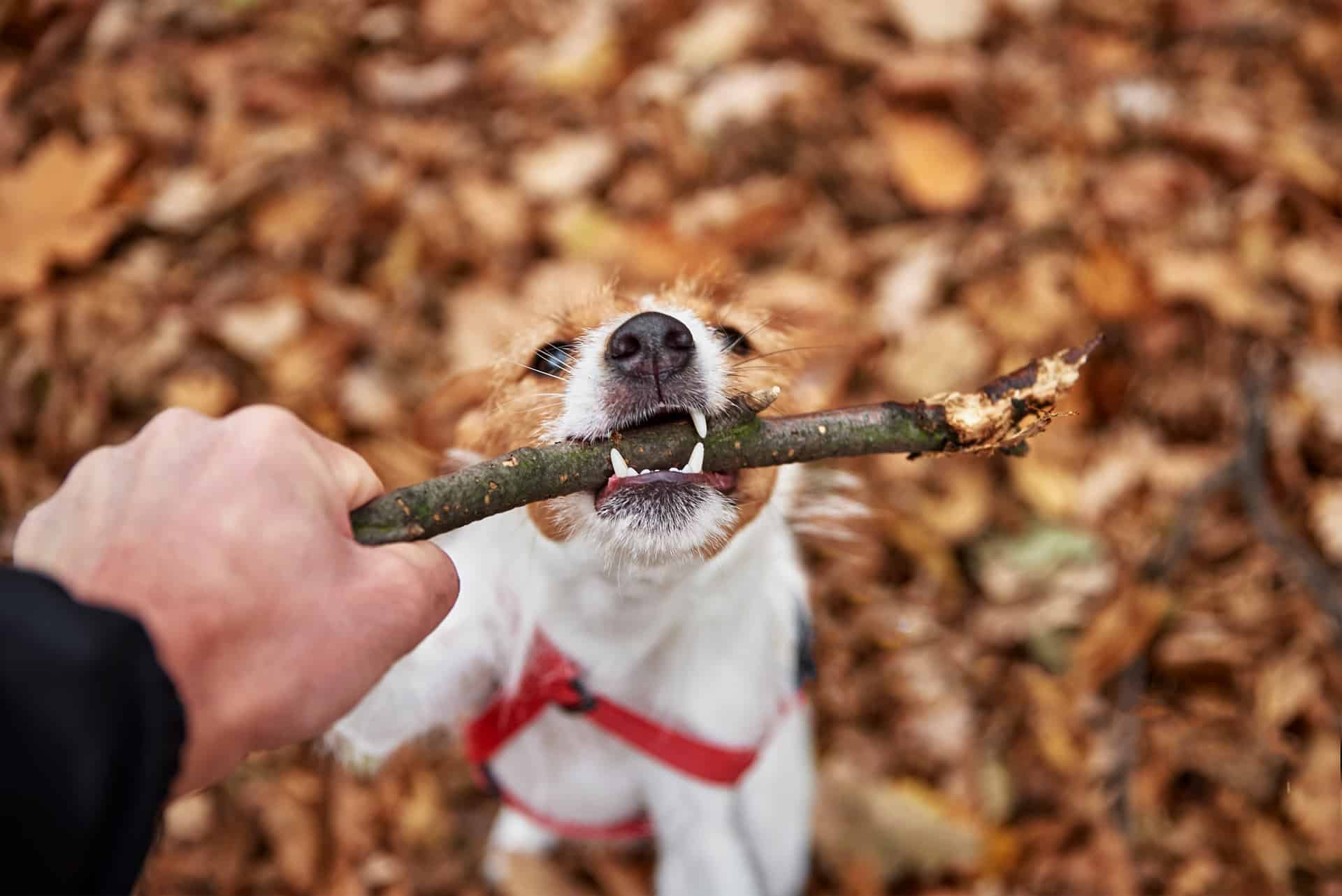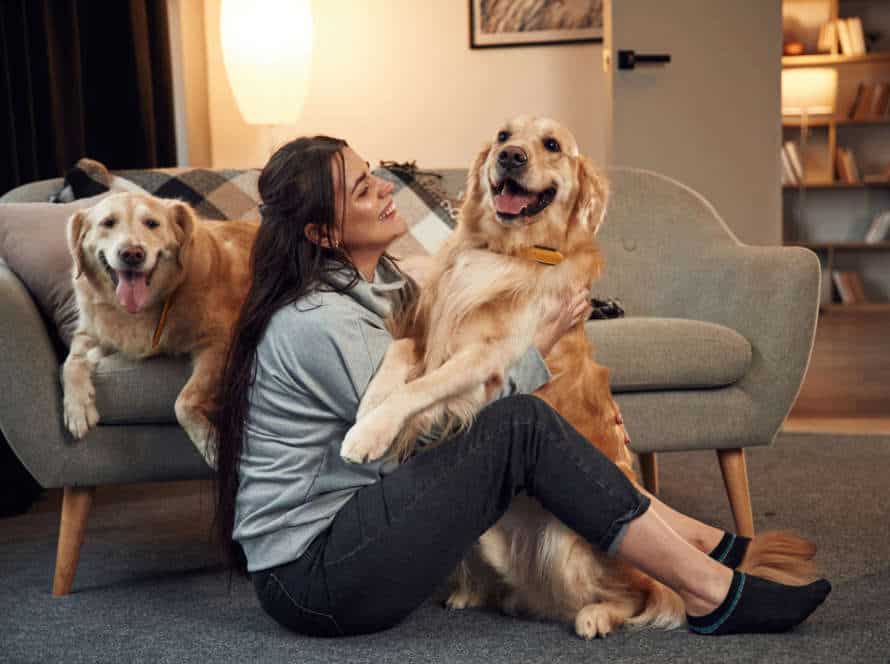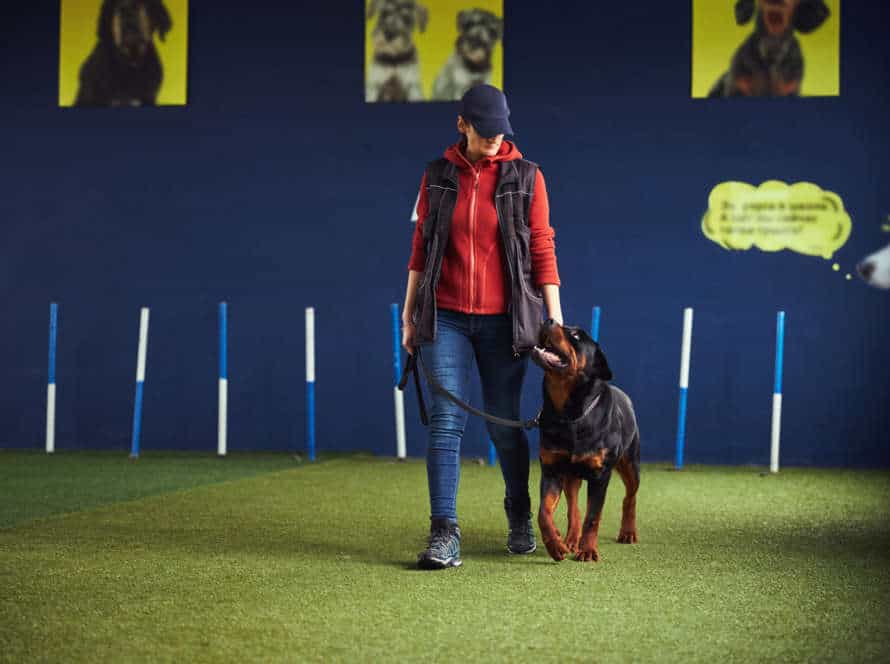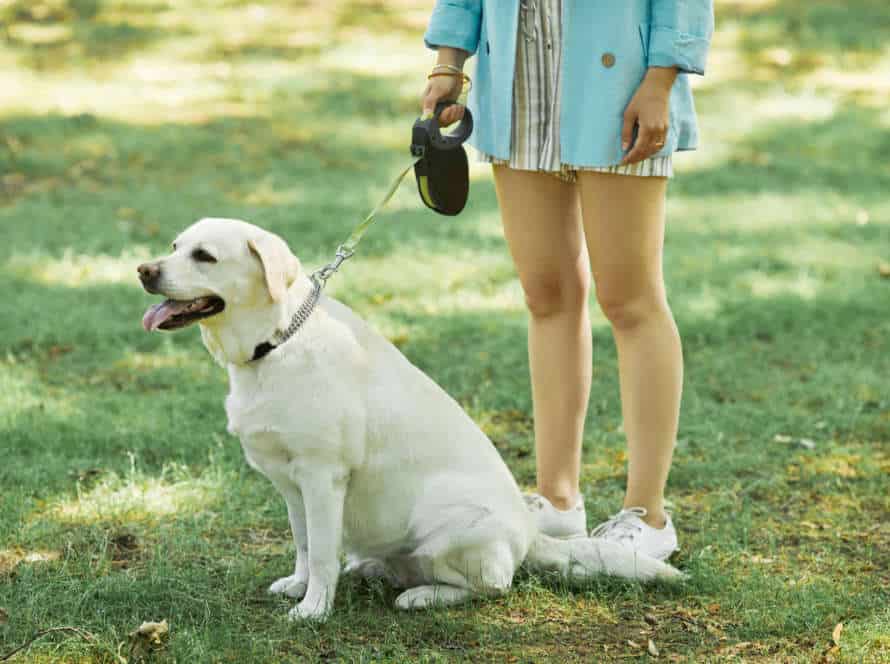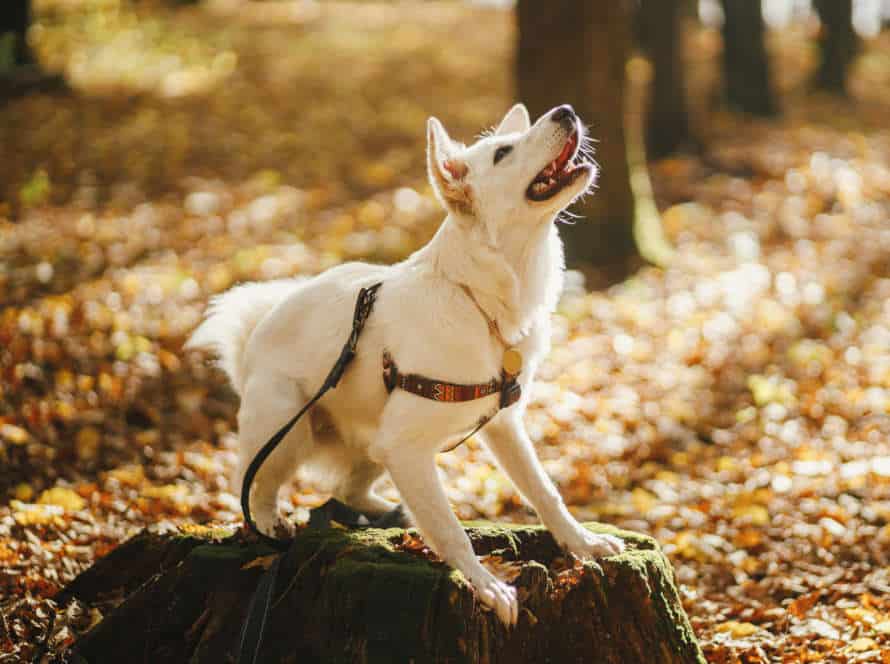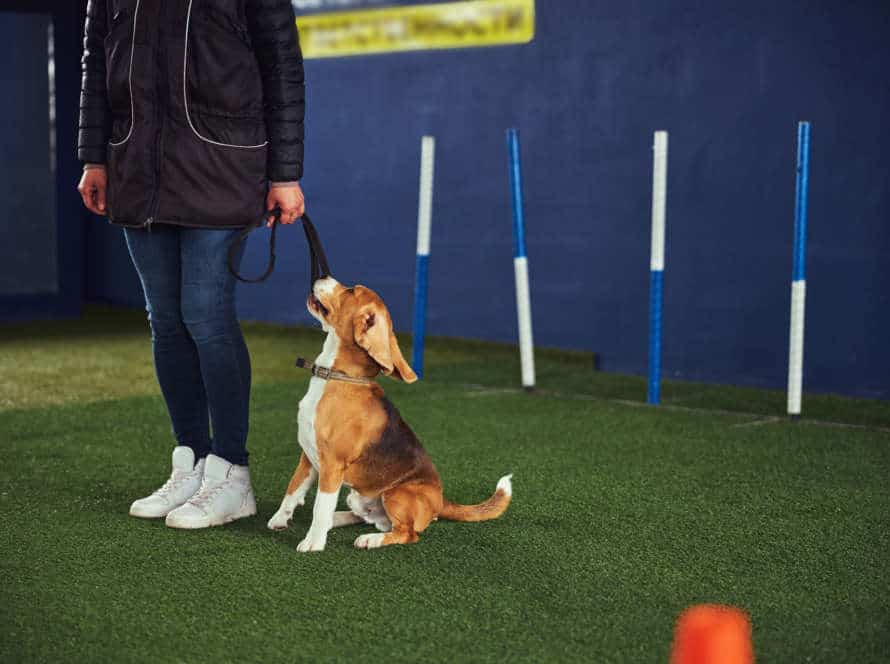Redirecting Puppy Biting: Definition and Importance
Do you know about redirecting puppy biting? It’s an essential part of raising pups! Redirecting is when you move a pup’s attention away from undesirable behavior, such as biting, and towards something desirable. It teaches puppies important skills in a positive way and helps prevent behavioral issues in the future. Let’s take a closer look.
What is redirecting puppy biting? And why is it important?
Why redirecting puppy biting is important for long-term success
Redirecting puppy biting is key for training success. Teach your pup to chew on the right things. Redirecting biting behaviour can have lots of benefits. Protect your stuff from destruction. Promote good behaviour and learn boundaries. Strengthen the bond between you and your pup.
Remember, provide toys designed for teething and chewing. Give them acceptable alternatives. This will reduce bad behaviour and help you train your pup.
Understanding the causes of puppy biting
Puppy biting is common and can be caused by teething, playfulness, fear, or aggression. Redirecting puppy biting is an important part of training. It helps your pup understand what is acceptable and what isn’t.
The benefits are:
- A stronger bond with your pup.
- Fewer destructive chewing and playing episodes.
- Teaching your pup appropriate levels of mouthiness.
- Better overall behavior and obedience.
To redirect puppy biting, provide chew toys, use positive reinforcement and consistently move their attention away when they start to bite. Consistency and patience are key for success here!
Redirecting puppy biting versus punishing puppy biting
Redirecting puppy biting is a training technique that encourages pups to turn to chew toys, bones, or other objects instead of people to bite. This is important so that doggies don’t develop anxiety or fear of humans while exploring their environment and communicating through their mouth. Redirecting can help them learn what’s okay to chew on and build a good relationship with their owner. It also helps with dental health and stops shoes being ruined!
Pro tip: Provide plenty of chew toys, and never punish or yell when they bite.
Redirecting Puppy Biting Techniques
Redirecting puppy biting can be a good way to control and stop it. Do this by guiding their biting onto something suitable, like a plaything or chew bone. This teaches them what can be bitten, and how hard. Redirecting puppy biting works for both short and long-term.
Let’s take a look at the techniques and the advantages of redirecting puppy biting.
Positive reinforcement techniques
Positive reinforcement is key to redirecting puppy biting. Rather than punishing puppies, it’s important to teach them what is acceptable behavior. Here are some benefits:
- Strengthen the bond between owner and pup.
- Create a stress-free learning environment.
- Decrease the chance of fear or aggression developing.
- Establish trust and confidence between owner and pup.
To redirect puppy biting, offer chew toys, use verbal cues like “no bite“, and positively reinforce desired behavior. Patience and consistency will help replace puppy biting with acceptable behavior.
Negative reinforcement techniques
Negative reinforcement is not advised for redirecting puppy biting. Positive reinforcement is a better choice and more successful in the long run.
When your pup tries to bite, firmly say no
or ouch!
Give them a toy or chew bone instead. Praise them for chewing on it.
Repeat this whenever they try to bite.
Eventually, they’ll learn that biting people has a bad consequence (no attention or play) and chewing toys has a good consequence (attention, affection, or playtime). This is the healthier and more effective way of changing puppy biting behavior for the long haul.
Redirection techniques
Redirecting puppy biting is important. It helps puppies know what is and isn’t okay. Plus, it builds a strong bond between pet and human. Here are some redirection techniques to try:
- Offer a chew toy. This shows them what’s acceptable. Plus, it keeps them busy.
- Praise good behavior. Give your pup lots of love when they use the chew toy instead of biting.
- Teach commands. Teach simple commands like “sit” and “stay.” This helps direct their energy and biting.
- Use playtime. Make sure to play with your pup. This is an effective way to redirect their behavior.
With consistency and patience, redirection can help create a great relationship between pup and owner.
Training methods and tools for redirecting puppy biting
Redirecting your pup’s biting is key for long-term success. To do this, there are various training methods and tools available.
Positive reinforcement involves giving rewards for good behavior, e.g. when they chew on a toy instead of furniture. Negative punishment means taking away something they like, like attention or a toy, to stop biting. Bite inhibition teaches them to control the pressure of their bite with gentle mouthing.
Chew toys are also essential. Look for dense rubber or nylon ones. Avoid toys that look like household items, like shoes or remotes, as these can lead to unwanted behavior. Supervise your pup when playing and redirect if they start to chew something they shouldn’t.
Best Practices for Redirecting Puppy Biting
Redirecting puppy biting is essential! Positive reinforcement is key. Learn the best practices for redirecting pup biting to achieve lasting success. This article gives you the info to do just that.
Consistency and repetition in training
Consistency and repetition are essential for redirecting puppy biting and achieving success in training. Here are some useful tips:
- Be consistent. Use the same commands and techniques every time you redirect your pup’s biting behavior. This helps them know what’s expected.
- Practice makes perfect. Puppies must practice the commands and techniques often to learn new behaviors.
- Positive reinforcement. Reward good behavior with treats, praise, and affection to stop puppy biting.
- Be proactive. Keep an eye on your pup and redirect any biting attempts before they get serious.
Remember, consistency and repetition are key to training your pup and redirecting their biting habits for success.
Starting early with puppy biting redirection
Early redirection of puppy biting is essential. This technique helps your pup control its biting impulse + associate positive behaviors with specific actions. Here are best practices:
- Use positive reinforcement to reward good behavior and teach your pup what you expect.
- Provide toys + chew treats for redirection from inappropriate objects.
- Say “No” or “Stop” if it starts biting you or others.
- Use a spray bottle/compressed air to startle + interrupt its biting.
Redirecting early can prevent serious bites + aggressive behavior in the long run. Tip: Consistency + patience is key, repetition is necessary.
Recognizing progress and rewarding good behavior
Recognizing progress and rewarding good behavior is a key part of redirecting puppy biting. Here’s how to do it!
- Positive Reinforcement: Offer treats, toys, and verbal praise when your pup does the right thing, like chewing on their own toys instead of you.
- Consistency: Be consistent when you’re training and rewarding your puppy each time they do something good. This helps them understand what’s acceptable.
- Patience: Redirecting puppy biting takes time and patience. Don’t get discouraged if progress is slow. Be patient and consistent, and reward your pup for good behaviour.
Recognizing progress and rewarding good behavior is important for redirecting puppy biting and setting them up for success. Pro tip- stay calm and give consistent rewards to encourage good habits.
Staying patient and consistent with training
Redirecting puppy biting is a must for success in the long run. Patience and consistency in training are essential. Here are a few tips to keep in mind:
- Stay cool. Puppies respond well to consistent positivity. Remain patient and upbeat.
- Use redirection: Offer chew toys when pup starts to bite. This teaches them what’s OK to gnaw on.
- Stick to a plan: Establish a routine for play and training. This sets rules and reduces pup’s anxiety.
- Be persistent: Redirecting biting takes time, repetition and commitment. Consistency is key.
Train consistently with redirection techniques, and pup will learn to redirect biting to proper items. This will lead to good long-term behavior.
Common Pitfalls in Redirecting Puppy Biting
Redirecting puppy biting can be tricky. Puppies bite to explore and learn. If done right, it could mean success. But, owners must watch out for a few common mistakes. Here are some to avoid:
Using punishment instead of redirection
Punishing puppies for biting is a common mistake. It can lead to fear and aggression. Redirection is better. Guide their mouth to a chew toy or bone. This teaches them to chew on the right things. Benefits: a happy dog who plays with toys and bones, and less aggressive behavior. Punishment leads to fear and aggression. Redirection is a positive reinforcement strategy for long-term success.
Inconsistent training methods
Inconsistent training methods can be a problem when redirecting puppy biting. Establishing a consistent approach is key to success. Let’s look at some common pitfalls of redirecting puppy biting:
- Lack of consistency: Changing your approach often confuses the puppy and lengthens the training process.
- Using physical punishments: Physical punishment increases anxiety and aggression, making the biting worse.
- Ignoring the problem: Ignoring it could lead to more serious issues later.
But there are benefits of redirecting puppy biting with consistent methods. These include:
- Establishing boundaries: It sets the foundation for other areas of training.
- Building relationships: It strengthens the bond between you and your puppy.
Lack of patience and persistence
It’s simple to trip up when redirecting puppy biting. Though, with the right tricks and perspective, you can win. Redirecting puppy biting is a must to ensure long-term success in puppy behavior and training.
Here are some tips to stay patient and persistent during puppy training:
- Realize that puppy biting is natural and needs consistent redirection and reward.
- Use toys, treats, and reinforcement to switch puppy biting and reward good behavior.
- Be mindful of your body language and verbal cues. This way, you won’t accidentally reinforce bad behavior.
- Be patient and persistent. Puppy training takes time and hard work, but it pays off in the end.
- Always remember, consistency is key for successful puppy training.
Failing to reward good behavior
Don’t forget to reward your pup for good behavior! This means giving them praise, treats, or extra playtime when they:
- Chew on the right things.
- Play with their toys.
- Lick instead of bite.
Praise can come in the form of a “good boy/girl” or “yes” in a happy tone. Treats are also a great way to show appreciation. And don’t forget to give them extra playtime with their favorite toy. Consistency is key – rewards will help encourage them to keep up the good work!
Conclusion: The Importance of Redirecting Puppy Biting for Long-Term Success
Redirecting puppy biting is essential for raising a well-behaved and happy pup. Benefits include:
- Promoting good behavior. Teaching your pup appropriate play & positive interaction with people & other animals.
- Protecting people & property. Preventing injury & damage.
- Strengthening the bond between you & your puppy. Building trust & establishing boundaries.
Redirecting puppy biting sets them up for success & creates a positive relationship.
Frequently Asked Questions
What is redirecting puppy biting?
Redirecting puppy biting is a training technique that involves redirecting a puppy’s biting behavior from inappropriate items or body parts to more appropriate toys or treats.
Why is redirecting puppy biting important?
Redirecting puppy biting is important for long-term success because it teaches puppies what is and is not acceptable to bite, while also satisfying their natural chewing instincts. Without proper redirection, puppies may continue to bite inappropriate items or body parts and develop bad habits that are difficult to break.
What are some effective strategies for redirecting puppy biting?
Some effective strategies for redirecting puppy biting include providing appropriate chew toys, using positive reinforcement to reward good behavior, distracting the puppy with play or exercise, and using a firm but gentle voice to discourage biting.
How long does it typically take to redirect puppy biting behavior?
The length of time it takes to redirect puppy biting behavior can vary depending on the individual puppy and the consistency of training. However, with consistent training and positive reinforcement, most puppies can learn appropriate biting behavior within a few weeks.
Are there any negative effects of redirecting puppy biting?
No, there are no negative effects of redirecting puppy biting behavior. In fact, redirecting biting behavior can help to prevent destructive chewing habits and improve overall behavior and obedience in puppies.
What can I do if redirecting puppy biting does not work?
If redirecting puppy biting does not work, it is important to consult with a professional dog trainer or behaviorist to identify and address any underlying issues that may be contributing to the behavior.

